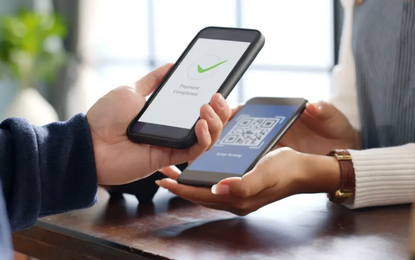

We are using our devices more and more to communicate. Banks can make the most of this trend to improve the UX and security of their apps.
Voice control for digital devices has gained ground in recent years, led by two of the main technology companies globally: Amazon’s Alexa and Apple’s Siri.
In the financial sector, the growth has mainly revolved around account administration features, such as balance inquiries and keeping track of transactions.
Capital One is a good example. The bank formed a strategic alliance with Amazon in 2016 to allow Alexa to carry out voice-activated banking services, such as sharing account balances and paying credit card bills.
In 2017, Barclays added voice payment functionality to Apple’s assistant. With the help of Siri, customers of the UK-headquartered bank can transfer money to other people by voice command. The transactions are authenticated by Apple’s TouchID, a fingerprint recognition system.
The most recent move comes from HSBC bank, which added new functionalities to its voice banking solution, this time for its call center. With the voice command, users can explain why they are calling and be identified and verified before being transferred to the relevant area - thereby leaving behind the menu of options for internal transfers.
These developments by global financial institutions make particular sense when you consider the benefits that hands-free banking offers. They are not only practical, but also cost-effective.
If between 10% and 15% of requests to banks’ call centers were replaced by voice commands, the industry could save up to US$ 800 million every year, according to a study by PwC about how voice solutions can transform the financial industry.
Without a doubt, it’s an opportunity that retail banking can’t ignore.
Voice interaction is a gateway to help improve personalization and the digital banking experience. And best of all, people are truly willing to use it.
Some 31% of respondents to a study conducted by Capgemini said they would rather use a voice assistant than visit a shop or a bank branch. That was an 11% increase compared to three years before.
Moreover, 44% of the users that participated in the research said they were interested in using voice assistants for banking transactions. This indicates that new needs are emerging, which financial institutions should make the most of.
Voice commands on banking applications can be used for various transactions. As well as the functionalities that some banks are experimenting with, the range of options includes logging in and out of banking sessions, foreign exchange and even confirming purchases.
Voice banking is clearly an efficient tool that clients appreciate from their bank. Instead of looking for the transaction they want to make on the app, it is much easier and faster to simply say it. We write around 36 words per minute on a smartphone – yet we speak at 125 words per minute on average.
Adding this functionality to mobile banking is very simple, as voice assistance architectures are easy to implement. Banks just need to discuss it with their technology provider.
In addition to these commercial advantages, another worth exploring is voice authentication.
As with facial or fingerprint biometrics, voice biometrics are unique for each person, which makes them a more reliable tool for authentication than passwords or PINs.
On top of facilitating user identification and authentication, voice biometrics have other advantages, such as offering automated calibration: they work as a voice recognition algorithm that can identify syllables and phonemes pronounced. They also offer proof of life and panic detection and improve the ‘Know Your Customer’ (KYC) process.
It is expected that the worldwide biometrics market will grow to US$ 3.9 billion by 2026, representing a compound annual growth rate of 22.8% from the US$ 1.1 billion value registered in 2020, according to a MarketsandMarkets report.
The study highlights that despite the impact of COVID-19 the market will keep growing as industries look for more cost-effective authentication and fraud prevention solutions.
The financial industry’s commercial and functionality priorities, such as reducing operative costs, improved authentication processes and operations, and fraud detection and prevention, will also play a role in their growth.
Join our online community and stay up to date with the latest news from the world of technology.